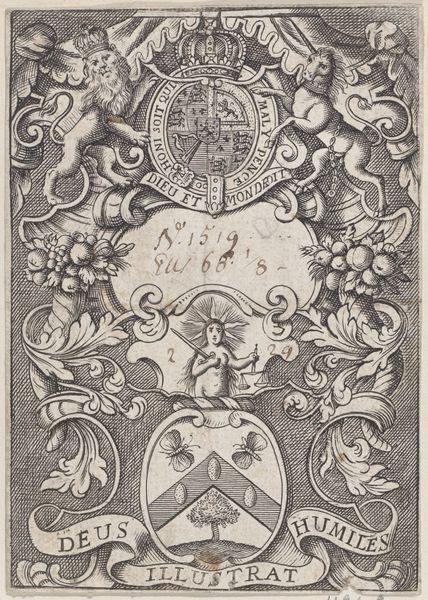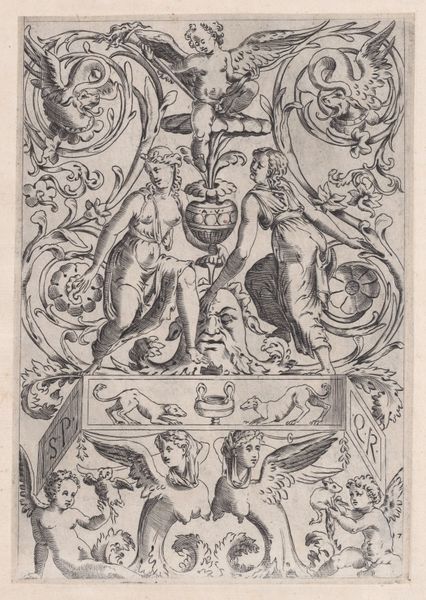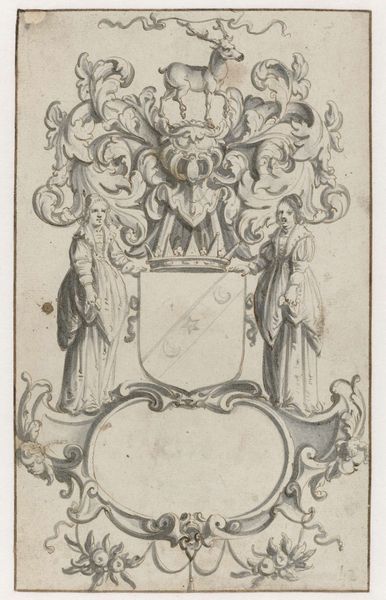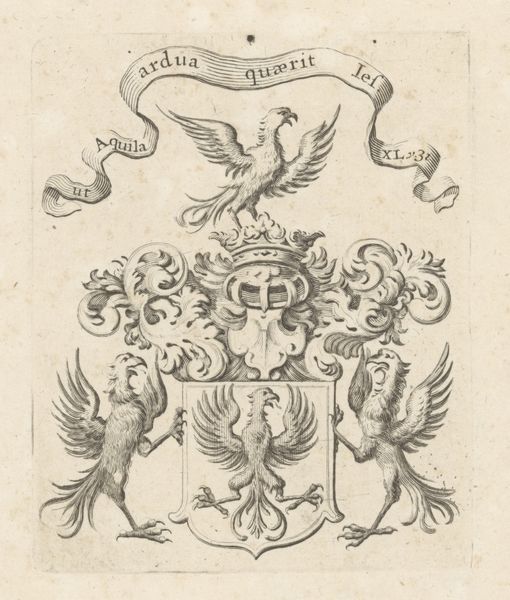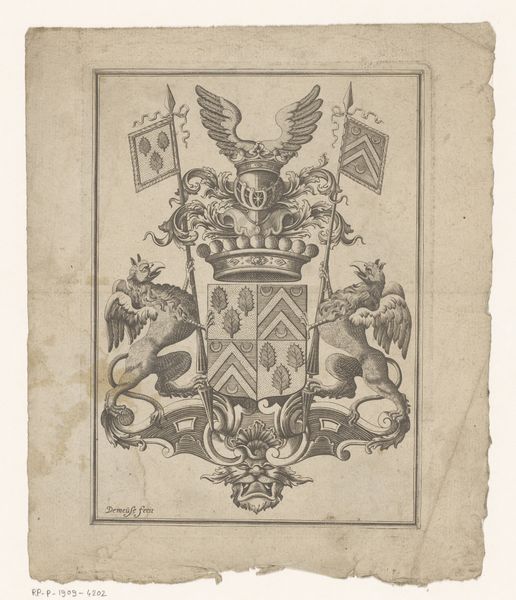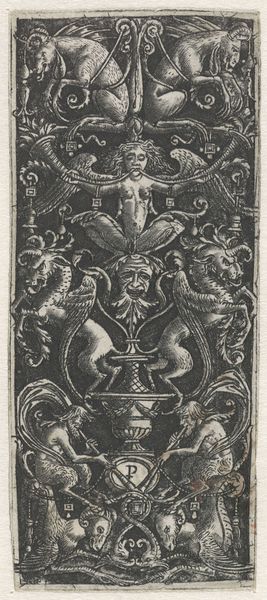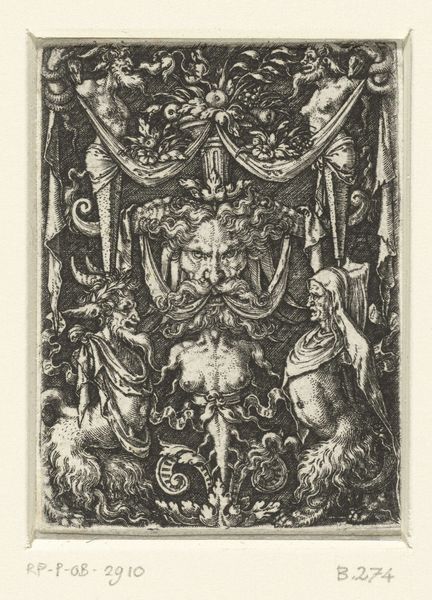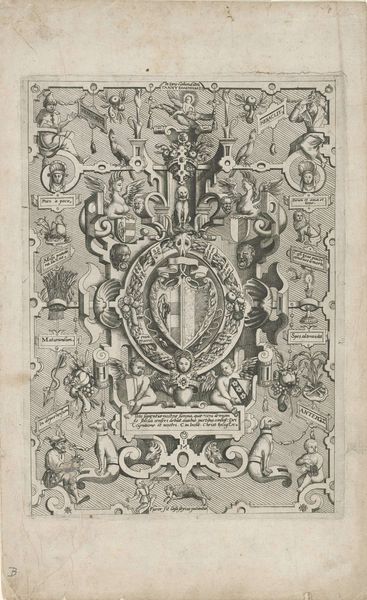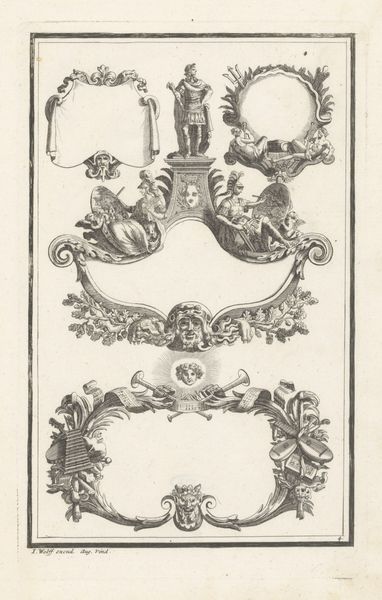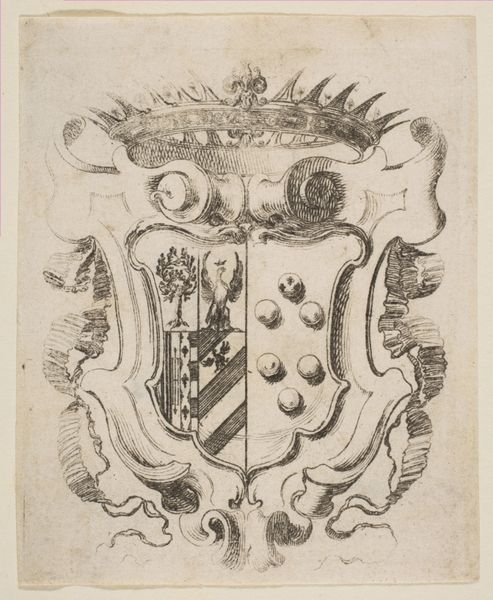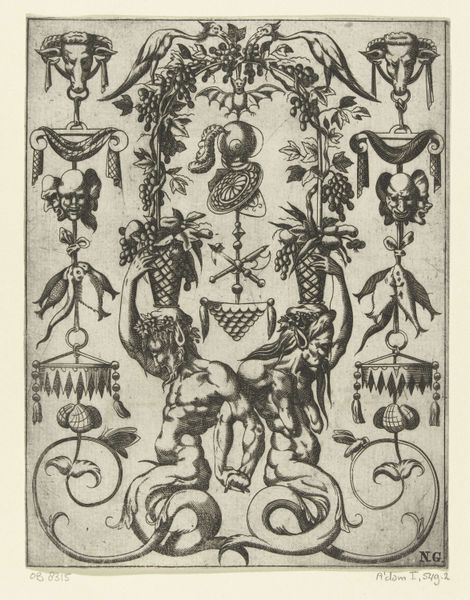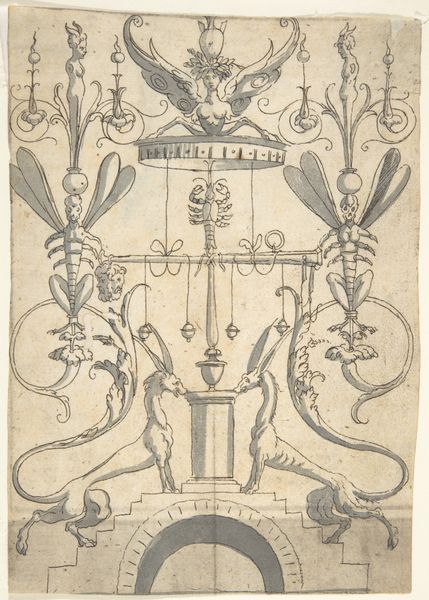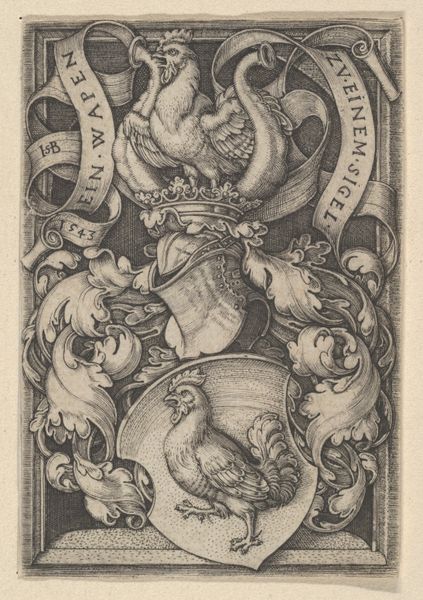
drawing, print, woodcut, engraving
#
drawing
#
medieval
#
pen drawing
# print
#
woodcut
#
line
#
northern-renaissance
#
engraving
Dimensions: 390 mm (height) x 320 mm (width) (bladmaal)
Curator: Here we have Albrecht Dürer's "Coat-of-Arms of Lorenz Staiber," created in 1521. It’s currently held at the Statens Museum for Kunst. Editor: My first thought is the incredible detail achieved with what appears to be a pen drawing—though I suspect a woodcut or engraving. The complexity is rather striking. Curator: Indeed, it's the meticulous rendering that captures the eye. Notice the symbolic elements—the crowned lion, the dog, the scrolling acanthus leaves. The heraldic structure provides a formal framework, yet the artist departs slightly to include vernacular textual references beneath. Editor: Considering this was likely commissioned, how did the means of production, from initial design to final print, influence its dissemination and consumption in 16th-century society? These prints played a vital role as conveyors of status, not unlike digitally designed images today. Curator: Precisely! The symbolic register is critical to decode. The lion suggests courage and nobility, whilst the dog may symbolize fidelity and loyalty, fitting qualities for a member of society seeking legitimization of lineage. Consider the interplay of power these representations perform when circulated. Editor: Beyond symbolism, it is hard to avoid noting the repetitive labor needed to produce something like this. We have to think about the workshop system Durer employed, and how his workshop shaped the aesthetics. Were the people producing these merely reproducers of Dürer's ideas, or did they also contribute creative input into these projects? Curator: A fair point; the concept of individual genius, the cult of personality, may obscure the labor that constituted artistic production in the early 16th century. Though perhaps beyond the scope of the original commission, its survival and continued aesthetic power resides, in part, with the inherent formal qualities Dürer brings as a craftsman to the graphic language itself. Editor: Yes, these issues can coexist, for certain. Thinking about Staiber, it becomes interesting how Dürer adapted artisanal graphic media to bolster his patron’s prestige through this intricate system of production, social context, and iconographic coding. Curator: Indeed. A synthesis of material and representation that is ultimately, quite persuasive. Editor: Absolutely, persuasive and deeply intricate. It's given me a renewed appreciation for Dürer's combined technical mastery and insight into the cultural climate.
Comments
No comments
Be the first to comment and join the conversation on the ultimate creative platform.
